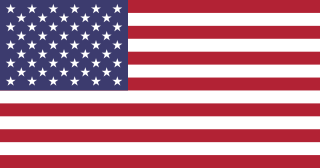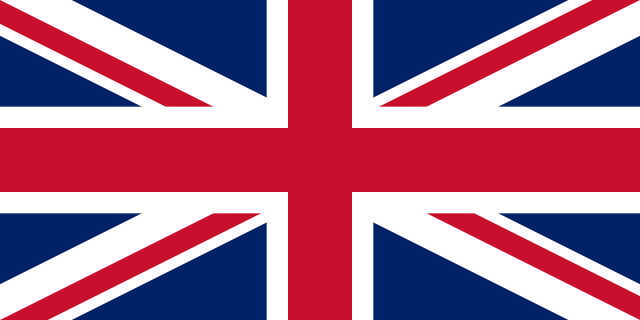Donar! Donar! Donar!
Führer Göring giving a fiery speech on the inferior nature of Yugoslavia and the Slavic peoples in general
Though Yugoslavia had avoided the destruction of war while Germany and its allies overran the rest of Europe, following the surrender of the Soviet Union, attention of Yugoslavia’s old rivals brought the specter of war over the fragile nation. Hungary wished to further undo the indignity of Trianon, Italy wished to seize Dalmatia, long ago promised to it in the First World War, and Bulgaria had never lost its desire for Macedonia, even after more than thirty years and several defeats. The Führer also began to express the idea that Slovenia was rightful territory of Austria, and thus the Greater German Reich, and elements of the Romanian government claimed that all of the Banat was rightful territory of Romania.
Under this substantial pressure, the government of Yugoslavia became increasingly anxious. They attempted to contact the American and British government for support, but due to geopolitical realities, they were unable to get a guarantee of their territories. As 1946 began, negotiations got underway between Yugoslavia and the Axis powers, hoping to stave off war by making potential temporary sacrifices. At this stage, the Axis demanded Dalmatia, Macedonia, and Slovenia be given up by the Yugoslavians if they wished to avoid war. Attempting to play for time, the Yugoslavians tried to avoid giving a direct answer, until Axis pressure forced an answer from them by the end of the month. They refused to consider giving up Dalmatia or Slovenia, but offer to hold a referendum in Macedonia.
Unamused with the Yugoslavian reluctance to recognize the preeminent position of Germany in the post-war world order, Führer Göring quietly authorized Operation Donar. Axis forces around Yugoslavia were suddenly ordered to prepare for an attack within the week, as the German 1st Parachute Division in the Ruhr and the 7th Panzer Division from Prague were brought to the border in Austria, while Hungary brought its Armoured Division to their border. Italy also used the week to prepare its marine and airborne divisions. For their part, the Yugoslavian High Command was not blind to the possibility of invasion. Fearing an attack was imminent, they began to draw up defensive plans, and prepared for the possibility of invasion.
The pride of the Yugoslavian navy, the destroyer Dubrovnik, on the left
Unfortunately for the Yugoslavians, Operation Donar preceded the finalization of their plans. On February 10, dozens of Axis divisions suddenly and without warning began an offensive against Yugoslavia. They claimed that the Yugoslavian government was oppressing the Croatians and thus the Axis needed to liberate them. The first blow would come when aircraft of the Regia Aeronautica launched an attack against the harbor at Split. The Yugoslavian navy, a handful of destroyers and submarines, was destroyed, and the aircraft they had in the vicinity were easily beaten back. Ships of the Regia Marina approached Split harbor soon after the air attacks ended, shelling the city, and landing Italian Marines to secure the city. A nearby Yugoslavian division moved to defend the city, engaging the Italians in urban warfare. Unfortunately for the Yugoslavians they were facing the crème de la crème of the Italian army, and they began to lose the Battle of Split as soon as it began. Not helping matters for them was the landing of Italian Paratrooper divisions behind Split, to cut off supply lines. Outgunned, outnumbered, and surrounded, the Yugoslavian division surrendered on February 12.
This was far from the only front that opened up. Axis troops poured over virtually every border. Italian troops from Albania invaded Montenegro and Kosovo, an Italian army in Istria moved into Croatia advancing down the coast, Bulgaria divisions assaulted Macedonia and Southern Serbia, Romanians attacked the Banat, and Hungarians swarmed into Vojvodina. By far the largest strike would come from the north, as a dozen German divisions crossed into Slovenia from Austria. Though the Yugoslavians had expected an attack in this sector, their divisions were still too few, and too weak to effectively resist the German attack, particularly from the multiple mountain divisions the Germans deployed in the attack. The defensive line in Slovenia was broken in the first day, and the German 7th Panzer division swiftly began to move towards Zagreb, backed by paratrooper landings along its supply lines. The Italian advance in Croatia easily outnumbered the Yugoslavian division defending the region as well. The Italians split their force, sending half south to secure Dalmatia and link up with the Specialist Corps at Split, and the other half linking up with the Germans at Zagreb, to cut the line of retreat for Yugoslavian divisions in western Slovenia. Thousands of Ustaše rose up as the Italians advanced, and joined their numbers, with others harassing the Yugoslavian armies beforehand. By February 17 Zagreb had been surrounded with a division trapped within, and another four Yugoslavia divisions cut off in western Slovenia. Another Yugoslavian division had been destroyed in eastern Slovenia, leaving only five divisions to guard against further advances in Croatia. The Luftwaffe had inflicted large damage on Yugoslavian divisions, and easily secured air superiority, with Zagreb suffering a short bombing campaign as a result.
Ante Pavelić, leader of the Ustaše
The southern attacks were much more subdued than in the north. Three Bulgarian divisions invaded eastern (Yugoslavian) Macedonia, and easily forced back the single Yugoslavian division, though progress was slow due to the terrain and relative Bulgarian inexperience compared to the other Axis powers. A Bulgarian advance against Nis also occurred, though this was met by a Yugoslavian division at Leskovac, and unable to advance further. Two Italian divisions from Albania struck Kosovo, defended by a single division, and managed to push them back due to numbers, quality, and equipment. Three Italians divisions invaded Montenegro from Albania, and similarly met one division, which they easily overwhelmed.
It was in the central battleground of Serbia where the only serious battles would be fought. The Axis powers had greatly underestimated the size of the Yugoslavian army and air force, and it was in the Banat and Vojvodina that this would make the most difference. The Romanians and Hungarians were quite surprised at the quality of the Yugoslavian air force as well, which hurt the Hungarians more due to their attempt to bomb Belgrade with unescorted bombers, losing them virtually the entire squadron in the attempt. Four Romanian divisions assaulting the Banat met five Yugoslavian divisions with prepared defenses. Superior Romanian quality and divisional strength, as well as gradually gained air superiority allowed them to defeat the Yugoslavians, but it took the better part of a week to do so. The Hungarians had slightly better luck, attacking with nine divisions, including one armoured, against a mere three Yugoslavian, allowing them to advance to Novi Sad by February 14 with light casualties.
General Ioan Mihail Racoviță, commander of the Romanian contingent involved with Operation Donar
At Novi Sad though the Hungarians would meet the first Yugoslavian counter attack. The Hungarian vanguard was caught off guard by two fresh Yugoslavian infantry divisions and a completely unexpected Yugoslavian armoured division. The Yugoslavian armour was not as advanced as the Hungarian tanks, and certainly not the German panzer, but the surprise of the attack, combined with the number of support divisions it had, allowed the Yugoslavians to force an Axis retreat for the first time since the war began. However once the main force of the Hungarian army gathered together, and Axis air forces established better air superiority over Serbia, the Second Battle of Novi Sad on February 19 went more in their favour. The Hungarian army then split up, part of it continuing the advance on Belgrade, and the other half moving south to surround it and meet up with the Romanians trying the same. The Belgrade pocket would be closed on February 23, with seven divisions, including the Yugoslavian armour, caught in the city and surrounding area. Five more divisions lay to the south of the pocket, and another two to the west.
Zagreb was left to starve and suffer bombardment by the Germans while their forward units advanced into Bosnia, avoiding the main Yugoslavian forces gathered to defend eastern Croatia. Zagreb would surrender on February 20. In Dalmatia the Italians would link up their forces and destroy the last Yugoslavian division on the coast. Italians forces from Albania finished securing Montenegro and began a limited offensive into Bosnia to secure the coastal region against Dubrovnik. In Kosovo the Italians would push the Yugoslavians as far as Pristina, and the Bulgarians in Macedonia would push the Yugoslavian division back to Skopje. The Bulgarians were still unable to reach Nis in South Serbia, the one front where the Yugoslavians held. The Romanians and Hungarians beat off attempts by the Yugoslavians to break the siege of Belgrade. With total air superiority over Yugoslavia having been secured by February 19, Axis air craft struck Yugoslavian units with impunity. German bombers began to attack Belgrade itself on February 21.
By February 25 the war was effectively over. The situation for the Belgrade pocket was rapidly worsening and all attempts to save them had failed. Slovenia, Montenegro, and Vojvodina had fallen entirely, Dalmatia and most of Croatia were occupied, Bosnia, Kosovo, and Macedonia had half or more of their territory seized as well. Central Serbia remained free, but the few divisions left there were losing soldiers from air attacks and skirmishes faster than mobilization could replace them, German forces were advancing from Bosnia, and once Belgrade surrendered, the Hungarian and Romanian forces would overwhelm them from the north too. The Italians held the entire coast, and there was no possible point to retreat to. Faced with impossible odds, Yugoslavian generals conferred with the King that they believed they had done their most to defend the kingdom, but stipulated that further resistance was futile and would only bring greater suffering to the nation. Reluctantly King Peter II agreed to a ceasefire with the Axis forces on February 26, with Yugoslavian forces to unconditionally surrender the following day. Many young Serbian soldiers refused to accept the surrender and deserted their units before the official disarmament, creating numerous resistance groups, primarily in central Serbia and south and eastern Bosnia. The most prominent of these is the Chetniks.
Peter II, last King of Yugoslavia, in military uniform as a sign of camaraderie with his subjects
Yugoslavia ceased to exist as a nation, its territory divided up between the victorious Axis powers- Slovenia to Germany, Dalmatia and Montenegro to Italy, Vojvodina to Hungary, Banat to Romania, and Macedonia to Bulgaria. The Kingdom of Croatia was formed as an Italian puppet state, based around the Ustaše and officially led by a member of the House of Savoy. The remaining territory of Serbia was made a German occupation zone.
[Terraferma may choose to continue as the Chetniks, any nation not currently claimed, or he can ask to be put at the front of the line for substituting any player who gets kicked.]












.jpg)



























